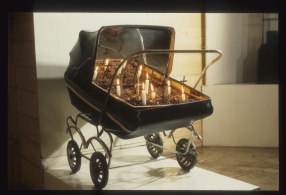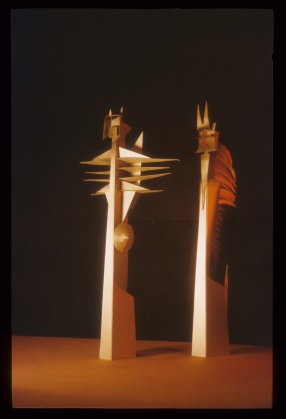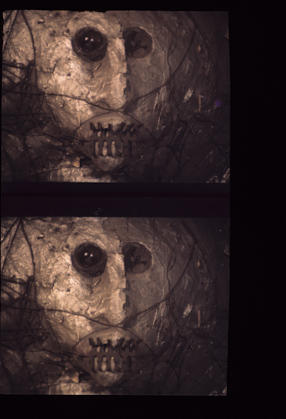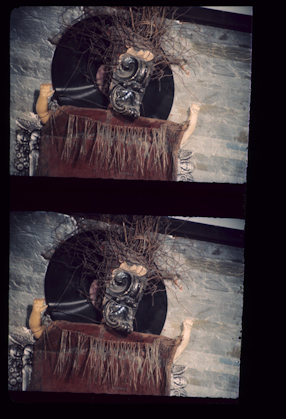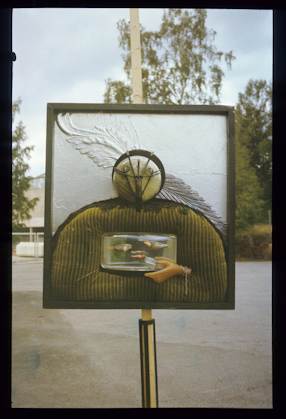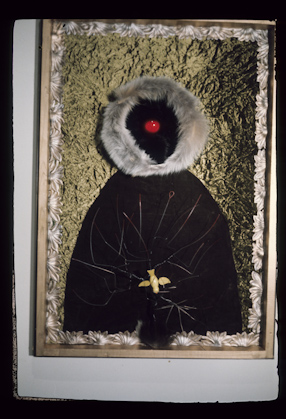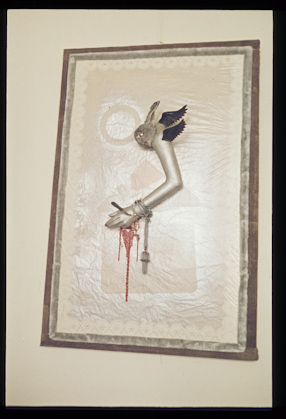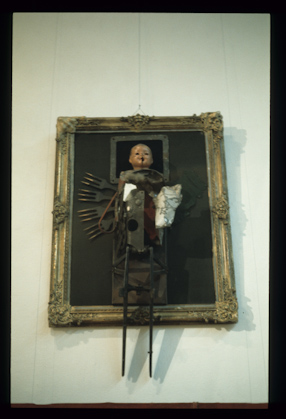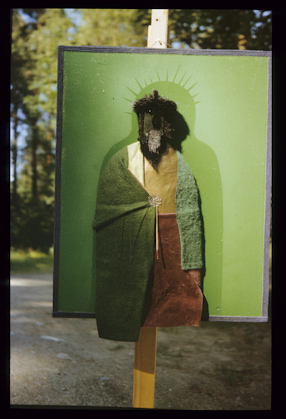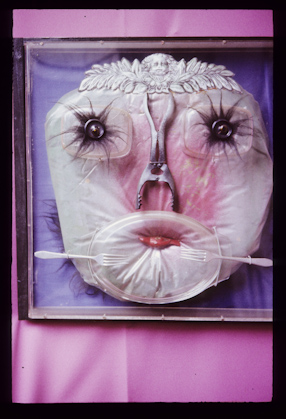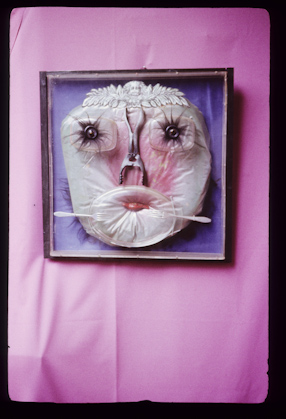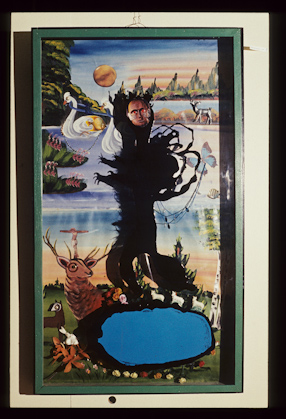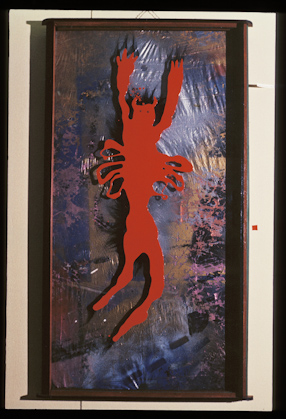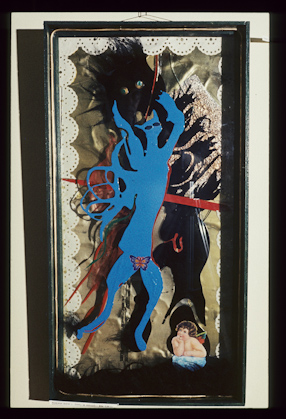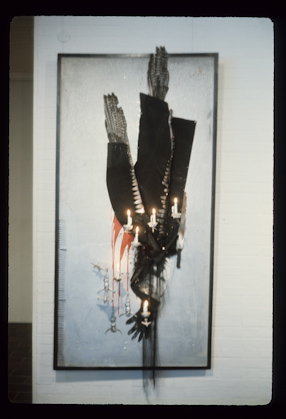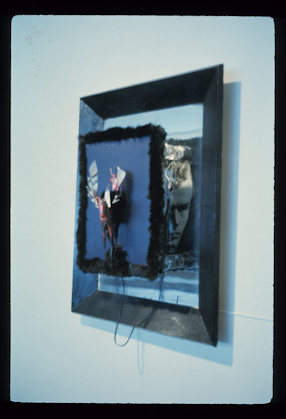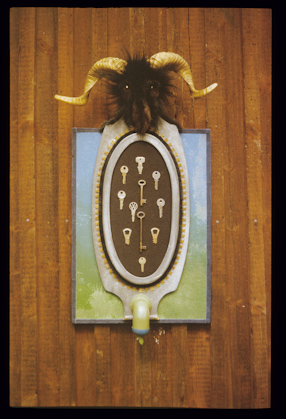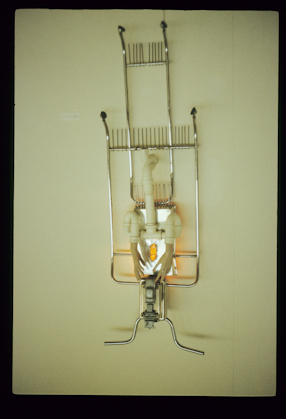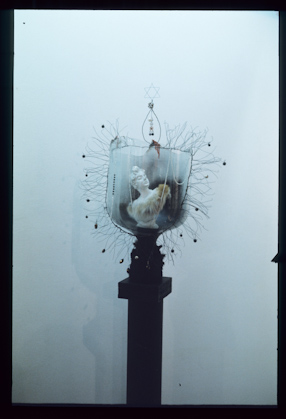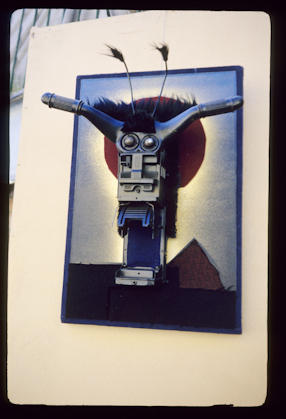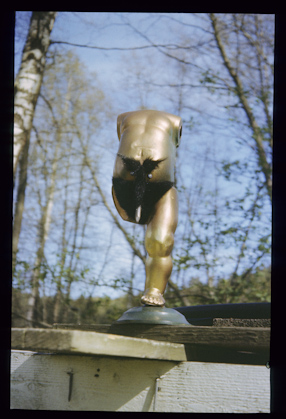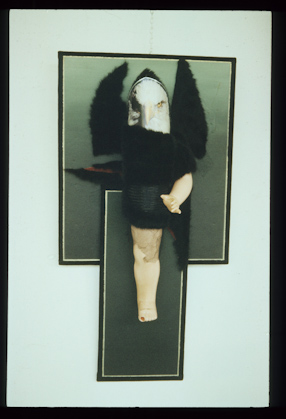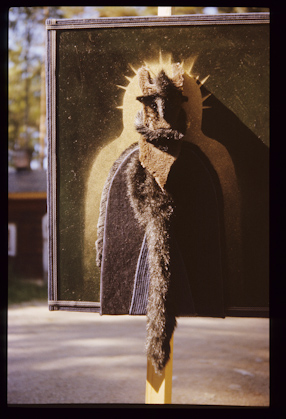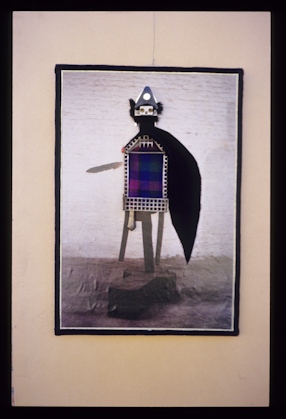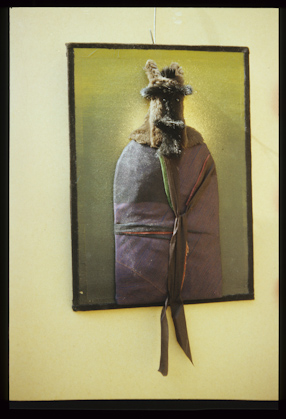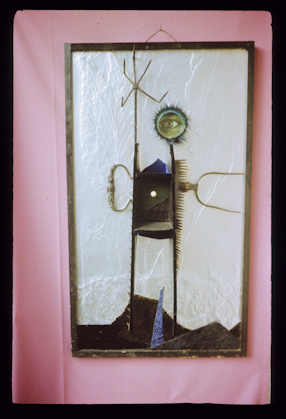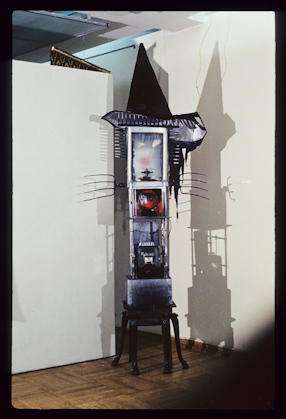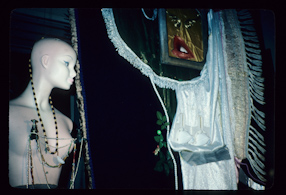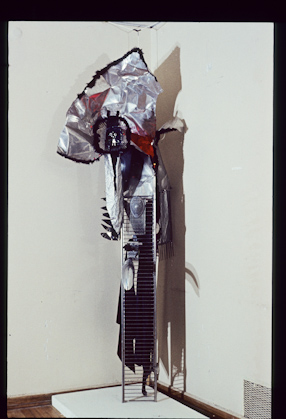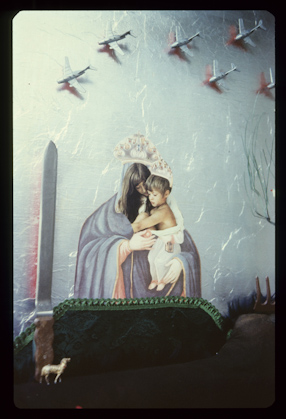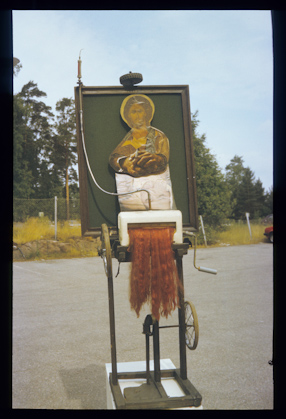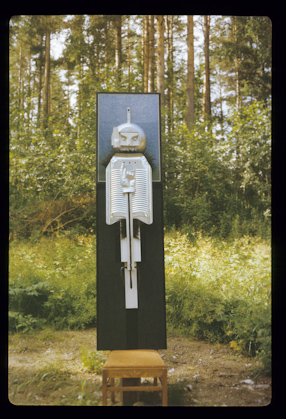Assemblages (1-50/786)
Hasior preferred to call narrative objects that he created image-like assemblies than assembles - a term binding in his era. He created banners, totems, home chapels and other magic objects, objects of private rites and cults in this technique. He treated them with indulgence, frequently underlining their side area of his art towards to monumental sculpture. As a result, he made several hundred assemblages and several monuments. Furthermore, he said: "I am more in favour of durability of impression after seeing my exhibit than of its physical endurance [...] in relation to the action of time" ("Przekrój" ["Cross Section"] 19.09.1991). He built references to emotions (dramaturgy) and harmony between contents and form balancing anecdote with purely plastic nature of used materials - as his contemporaries wrote about him. Assemblies, also their titles, draw attention to his sense of humour broken by predilection for pathos and kitsch. In his works he used objects-waste connected with small-town and rural culture of urbanising and advancing society - culture called plebeian by him to distinguish it from indigenous folklore. He was interested in commonness, understood as a material context, physicality (he was also interested in issues of optics, in general, natural sciences). He wanted his art proposing the possibility of experiencing something on border of strangeness to be hooked on universal and meaningful codes. He was looking for various ways of iconographic standardisation of experiences.
"Maybe I am an artist with a tendency to act emotionally. This would also explain my internal landscape of aesthetic predilections based on romantic expression. I like more spontaneous than calculating approach to work. But in order to practice this profession seriously and honestly it is necessary to arrange for yourself various methods of «training». To learn ways of pulling expression out of the matter. These experiences, often laboratory ones, are very needful and useful when designing objects of a monumental nature [...]. And yet: this is my way to get away from boredom in work and calcification of imagination" - he said about assemblages in "Sztandar Młodych" ["Youth Banner"] (1964, No. 194).
Bibliography:
M. Moskalewicz, Twórczość Władysława Hasiora w latach 60. na tle artystycznych eksperymentów neoawangardy [The works of Władysław Hasior in the 60s against artistic experiments of neo-avant-garde], in: Hasior Powrót [Hasior Comeback], ed. M. Raińska, Nowy Sącz 2011.
D. Crowley, Sztuka odpadów [Art of Waste], in: Konferencja tatarzańska [Tatra Conference], ed. J. Dembowska et al., Zakopane 2015.
M. Szczygieł-Gajewska, Władysław Hasior, Warszawa 2011 (a list of assemblages included).
